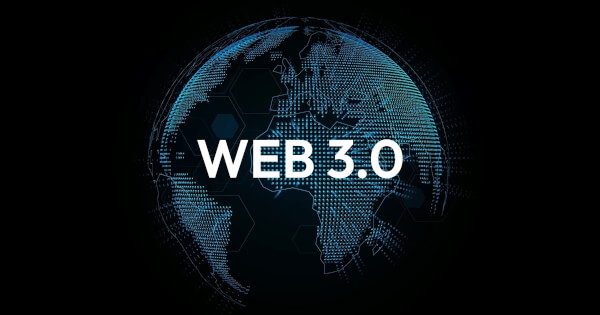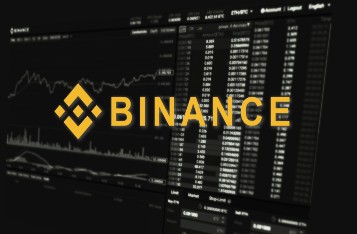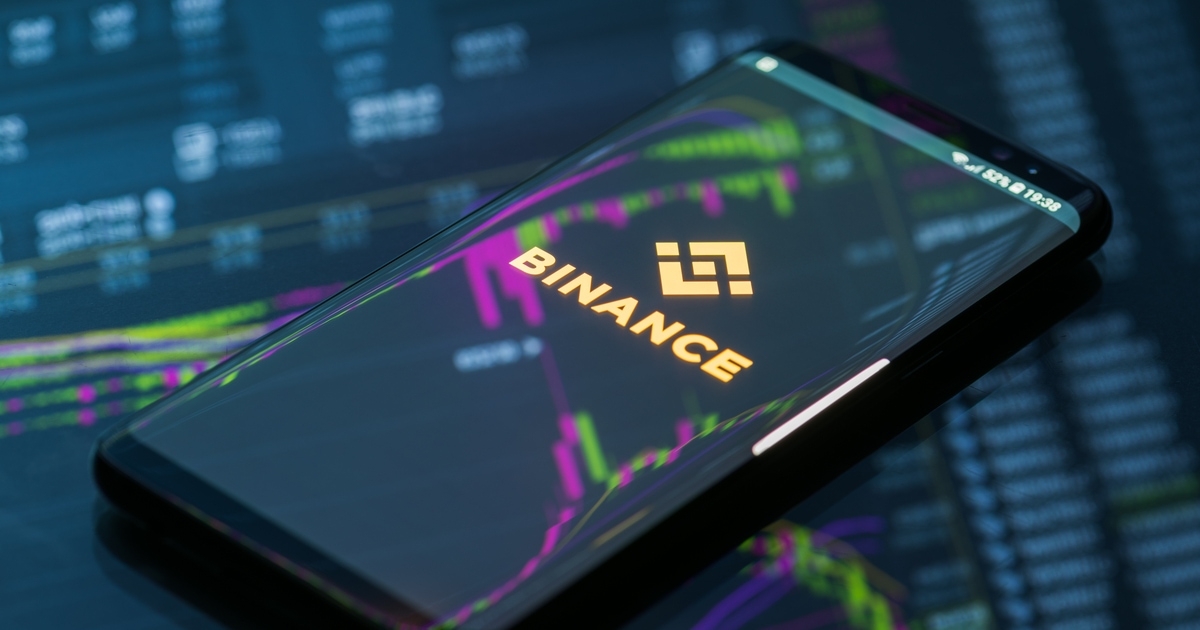Hot Projects
Bridging Investment Opportunities: Understanding Cross-Chain Bridges | IDOs News


The blockchain atmosphere is evolving unexpectedly, with various networks presenting particular capabilities and abilities. However, interoperability between those networks has remained a mission, hindering the seamless switch of property and records throughout specific blockchains. Cross-chain bridges have emerged as an approach to this problem, allowing users to bridge belongings and records between disparate blockchain networks. In this newsletter, we discover the concept of pass-chain bridges, their importance in increasing funding opportunities, and the ability they maintain for the wider blockchain atmosphere. Crypto market is filled with investment opportunities but it takes skills and knowledge to figure them out. Visit bitcoin buyer ai now and start learning about investing.
Understanding Cross-Chain Bridges:
Cross-chain bridges are protocols or technologies that facilitate the switch of belongings and statistics between one-of-a-kind blockchain networks. These bridges act as connectors, permitting customers to transport tokens, cryptocurrencies, and other virtual belongings from one blockchain to any other while maintaining interoperability and security. Cross-chain bridges operate by means of locking assets on the originating blockchain, minting corresponding tokens on the vacation spot blockchain, and vice versa, making sure that assets remain pegged and interchangeable across chains.
Cross-chain bridges make use of numerous mechanisms and architectures to reap interoperability, which include atomic swaps, relay chains, sidechains, wrapped tokens, and decentralized bridges. These mechanisms permit seamless conversation and switch of property among blockchain networks, expanding the software and accessibility of decentralized finance (DeFi) applications, decentralized exchanges (DEXs), and different blockchain-primarily based offerings.
The Significance of Cross-Chain Bridges in Expanding Investment Opportunities:
Cross-chain bridges play a pivotal role in increasing investment opportunities and unlocking new use cases in the blockchain surroundings. By bridging belongings and liquidity across distinct blockchain networks, go-chain bridges offer numerous giant blessings for buyers, developers, and customers.
Asset Interoperability:
Cross-chain bridges permit interoperability between numerous blockchain networks, permitting users to get entry to a broader variety of property and investment possibilities. Investors can leverage go-chain bridges to move assets seamlessly between extraordinary blockchains, diversifying their portfolios and accessing liquidity throughout multiple markets.
Cross-Chain DeFi:
Decentralized finance (DeFi) packages have proliferated across various blockchain networks, presenting an extensive range of economic services including lending, borrowing, buying and selling, and yield farming. Cross-chain bridges facilitate the mixing of DeFi protocols and assets, allowing customers to participate in cross-chain liquidity pools, yield farming techniques, and arbitrage possibilities across exceptional blockchains.
Enhanced Liquidity:
Cross-chain bridges improve liquidity by bridging belongings and liquidity swimming pools across disparate blockchain networks. By permitting seamless asset transfers and trading among blockchains, cross-chain bridges increase marketplace performance and reduce slippage, presenting higher fee discovery and execution for buyers and traders.
Decentralized Exchanges (DEXs):
Decentralized exchanges (DEXs) play a crucial function inside the blockchain atmosphere by allowing peer-to-peer trading of digital property without the need for intermediaries. Cross-chain bridges decorate the interoperability and liquidity of DEXs with the aid of allowing the seamless transfer of belongings between specific blockchains, increasing the range of trading pairs and investment possibilities available to customers.
Cross-chain Asset Management:
Cross-chain bridges facilitate asset management and portfolio optimization throughout more than one blockchain network. Investors can use go-chain bridges to rebalance their portfolios, deploy capital into one-of-a kind asset classes, and access specialized funding strategies across diverse DeFi platforms and protocols.
Examples of Cross-Chain Bridges:
Several pass-chain bridge solutions have been advanced to cope with the interoperability challenges inside the blockchain atmosphere. Some tremendous examples encompass
Chainlink, a decentralized oracle network that offers steady and dependable information feeds and offerings to blockchain programs. Chainlink’s Interoperability Protocol (Cross-Chain Interoperability Protocol, or CCIP) enables go-chain verbal exchange and asset switching between one-of-a-kind blockchain networks, facilitating interoperability and connectivity across the decentralized net.
Cosmos is a decentralized community of interconnected blockchains that enables interoperability and scalability via its Inter-Blockchain Communication (IBC) protocol. Cosmos Hub serves as the number one hub for move-chain communication, permitting tokens and information to be securely transferred among different Cosmos zones and outside blockchain networks.
Polkadot is a multi-chain blockchain platform that permits interoperability and move-chain conversation through its relay chain and parachain architecture. Polkadot’s interoperability protocol permits para chains to hook up with outside blockchains and networks, facilitating the switch of belongings and statistics between extraordinary blockchain ecosystems.
Wrapped Tokens:
Wrapped tokens are tokenized representations of belongings from one blockchain that are pegged to equal assets on any other blockchain. Wrapped tokens are created through custodial or decentralized mechanisms and can be traded on decentralized exchanges (DEXs) and liquidity swimming pools. Examples consist of wrapped Bitcoin (WBTC) and wrapped Ethereum (WETH), which constitute Bitcoin and Ethereum belongings on different blockchain networks.
Investing in Cross-Chain Bridges: Opportunities and Considerations:
Investing in move-chain bridges offers possibilities for buyers in search of publicity to interoperability answers and decentralized infrastructure. However, it’s important to consider several factors when comparing investment possibilities in move-chain bridges:
Technology and Innovation:
Assess the technological talents and innovation capacity of pass-chain bridge projects, inclusive of their interoperability protocols, security mechanisms, and scalability solutions. Look for initiatives that demonstrate technical excellence, robustness, and a clear roadmap for improvement and deployment.
Ecosystem Support:
Evaluate the level of surroundings aid and adoption for move-chain bridge projects within the blockchain network. Consider factors together with developer activity, network engagement, partnerships, and integration with present DeFi structures and protocols.
Interoperability Standards:
Consider the interoperability standards and protocols supported through move-chain bridge tasks, in addition to their compatibility with different blockchain networks and ecosystems. Look for tasks that adhere to open requirements and promote interoperability across various blockchains.
Conclusion:
In conclusion, cross-chain bridges are a crucial component of the evolving blockchain ecosystem, enabling interoperability and connectivity between different blockchain networks. By bridging assets and liquidity across disparate blockchains, cross-chain bridges expand investment opportunities, enhance liquidity, and unlock new use cases in decentralized finance (DeFi) and other blockchain-based services. As the blockchain landscape continues to evolve, cross-chain bridges will play an increasingly important role in shaping the future of decentralized infrastructure and interoperability.
Hot Projects
Strategies for Crypto Investors in a Joint Financial Journey | IDOs News


By Terry Ashton, updated July 25, 2024
Crypto investment is often discussed in the context of a sole owner or investor. Crypto wallets are highly secure if you keep your private keys to yourself.
However, real life presents more complex scenarios than simple one-person ownership of crypto assets. People have spouses, business partners, collaborators, families, and heirs. Moreover, crypto may need to be turned over to other parties for security or estate planning purposes.
The most common case for joint finances is marriage. One of the first questions you encounter in married life is how you manage your money. Is it ideal to combine finances thoroughly, keep them separate, or have a combination of individual and joint accounts? With more people keeping crypto in their portfolios, how do married couples handle transparency, security, and investment decisions?
Business partners are also on a shared financial journey. If a corporation has bitcoin holdings, the partners must be clear about custody, insurance, and accounting.
In this article, we discuss the scenarios that may involve crypto and joint finances. We will provide helpful tips on how married couples or partners can handle crypto holdings and investments alongside other considerations.
Managing Money and Crypto as a Couple
Married couples are not only a family unit but an economic unit. That being said, some couples are uncomfortable about discussing financial matters. First, you must accept that, like it or not, unless you’ve got an iron-clad prenup, your assets are largely conjugal.
When it comes to money in marriage, honesty is the best policy. The same applies to crypto ownership, as it’s a new form of digital money and an investment asset simultaneously.
On the surface, the founding principles of Bitcoin and crypto lie contrary to full disclosure with another party. However, marriage is a commitment that works when both parties trust each other.
Whether you decide to have a separate, combined, or hybrid arrangement where some accounts are merged, and others are not, you still need to create a solid foundation of transparency on which to build your financial journey.
Starting with separate accounts
In the early stages of the marriage, separate bank accounts make sense. Couples move in with different spending and saving habits and an income difference. They might even come in with debts that may be brought into the relationship. Separate accounting systems help clarify obligations, responsibilities, and budgets.
This level of autonomy could lead to better communication on who is responsible for which payments. Some couples decide to halve expenses, while others agree to divide the costs proportionately based on how much each earns. In either case, tracking expenditures using budgeting apps, a spreadsheet, or a joint credit card will help build a foundation of cooperation and transparency.
This strategy has disadvantages when circumstances change—when one decides to change careers, become a homemaker, or go back to school. It could also lead to a situation where investments are not optimized.
Setting up a joint account
Joint accounts simplify financial management immensely for couples. As such, they are the easiest choice, even though there are some fine points to consider. There is less fuss over relative income, and children’s expenses are paid from the joint or family account.
What is a joint bank account, and how does it work?
A joint bank account is shared with another individual for various purposes, including deposits, bill payments, savings, shared expenses, and investments. Joint accounts are commonly held by spouses, family members, or business partners. However, parents and a minor child can also have a joint account.
Benefits of a joint account include quick access during crises or illness. It ensures continuity even when one party is ill, disabled, or deceased. In the case of death, access to joint funds is ensured without a will, lawyer, or having to deal with probate court as long as the joint account has the right of survivorship.
Adult children caring for their aging parents might consider creating a joint checking account with their parents to access funds to pay for care quickly.
If you decide to invest in crypto in the future, a joint bank account could ensure proper monitoring and allocation of funds.
Choosing the correct joint bank account
Your joint account must have the features that suit you and your co-owners. It can be a joint savings account, a checking account, or a hybrid savings and checking in one.
While you can always go to a brick-and-mortar bank branch to open your account, opening a joint bank account online is much simpler. SoFi’s joint account is an example of a combined savings and checking account.
It has ideal features for crypto investors who want the convenience of online transfers and the opportunity to make the most of their money. Its APY is ten times the national average savings rate. There are no account fees or limits on the number of transfers you can make.
Couples and partners who trade or invest in crypto need a joint online bank account to facilitate quick transfers and fund their wallets. With online accounts, it is easy to facilitate tested investment strategies like DCA or dollar-cost averaging, where you buy a fixed amount of BTC or other crypto at regular intervals, regardless of the price. Joint accounts ensure that all crypto investments within the partnership or marriage are documented.
Using multisig crypto wallets
Multisignature or multisig wallets are ideal for married couples or partners who jointly invest in crypto or want to share their crypto holdings securely.
A multisig wallet uses multiple private keys to access or transfer crypto assets. The parties utilize smart contact to set the access rules for the shared wallet.
With such wallets, you will use a multi-factor authentication (MFA) version. MFA is a multi-step account login process that requires more than just a password. Users may need a code sent to their phones or email, scan a fingerprint, utilize other biometric authentication, or access a code through an authenticator app. The second form of authentication helps secure the account by blocking unauthorized access when your password has been compromised.
How does a multisig wallet work?
A multisig wallet will require two or more private keys to execute a transaction. Smart contracts enforce the access rules, including setting the minimum number of keys.
Based on the number of keys needed to allow a transaction, multisig wallets can be classified as:
One of 2 signatures required
Two parties co-own the wallet and trust each other enough to share funds without requiring the other’s authorization. They can sign the transaction independently.
Two of 3 signatures required
The 2-of-3 signatures setup is one of the most popular multisig wallet arrangements. It requires two private keys to execute a transaction. A standard security practice is to have one key online, another key offline, and a third key held by a security company.
Business partners who invest in crypto or hold crypto could use this system or employ it as part of a larger custody plan.
Three of 5 signatures required
The partners or owners store four keys offline in different locations. The fifth key stays with the wallet provider or security company. Access to crypto assets is possible when you obtain two of the four offline keys.
This method is ideal for couples who own a sizable amount of crypto and business partners who want to safeguard their Bitcoin or crypto investments.
Multisig wallets that require all private keys
The previous three types of multisig wallets are classified under threshold signature wallets. However, another kind of wallet with stricter rules requires all private keys for access.
Smart contracts can establish these conditions. Hence, if you have a wallet with five keys, your predetermined number of signatories is five, and all five keys are needed to validate a transaction.
To use multisig, the partners or couple must be familiar with crypto and blockchain technology and the security implications of handling private keys.
Benefits of Multisig Wallets
For crypto holders and investors with joint finances, multisig wallets offer the following benefits:
Transparency
Crypto ownership can sometimes pose problems in a marriage and divorce. Multisig infrastructure can enhance trust and credibility among business partners. A shared multisig wallet with set conditions for access ensures a mutual agreement between parties when signing a transaction, provided the smart contract allows it.
Treasury management
Businesses investing in crypto or keeping it on their balance sheet can start their crypto treasury with shared wallets. It is crucial for companies to manage key person risk, and shared wallets reduce this risk. You can share the wallet with your board of directors or partners.
It is also possible to maintain shared wallets in organizations that work across multiple countries. In a Decentralized Autonomous Organization (DAO), strangers can share assets without needing trust.
In a business partnership, you can use a 2-of-2 setup. In a corporation with board members, you can do a 4-of-6 setup if you need majority votes to approve a transaction. The setup can be modified to a 6 of 6 if you need the entire board to reach a consensus for a financial decision.
Medical emergencies or untimely death
In all relationships and shared financial journeys, crypto ownership can be disrupted or jeopardized if someone falls ill or dies and fails to pass on private keys. Multisig wallets ensure that loved ones can still access your funds even if you are incapacitated.
Remember that there have been many cases where the failure to plan for worst-case scenarios has resulted in millions of dollars in crypto wallets. For spouses or parents and children, a one-of-two setup will suffice.
Estate planning
For more detailed estate planning, you can work with a law firm specializing in crypto-related cases. Multisig wallets can easily be customized to suit your needs if more than two parties are involved.
To Protect Your Crypto, Use Robust Financial Infrastructure
Couples, business partners, families, and others who share a financial journey must start the money conversation ASAP. Even if money and wealth discussions are uncomfortable initially, they are essential to protecting a shared economic future. Failing to set the rules with clarity will backfire in the form of losses, litigation, and missed opportunities.
Newly married couples can ease into their financial journey with both separate and joint bank accounts. Those jointly invested in crypto—whether spouses or business partners—must consider getting multisig wallets to protect and help facilitate decisions. Multisig wallets can be configured using smart contracts to abide by signature requirements to approve a transaction. This ensures business continuity and financial resilience.
In any case, joint financial journeys involve more than just transparency and communication. They need the proper financial setup and infrastructure to ensure strict compliance.
Unlike bank accounts and funds, crypto does not require IDs and signatures—only private keys. One of the most fundamental tenets of crypto is “not your keys, not your crypto.” Make sure the right hands manage those keys.
Hot Projects
The Hottest ICOs In 2024 | IDOs News


By Terry Ashton, updated July 24, 2024
The crypto market is alive with energy as investors look for the best ICOs to buy in July. With new projects launching and breakthrough technology emerging, 2024 is shaping up to be an incredibly exciting year.
Here is our list of the hottest ICOs this year:
- Poodlana (POODL)
- Bettix Casino (BETX)
- DogePreneur (DOGEP)
These projects were chosen for their innovative approaches, strong presale performances, and unique value propositions in their respective markets. They stand out due to their potential for high returns, solid foundations, and the significant interest they’ve garnered from the crypto community.
Let’s dive into what makes these projects the best ICOs to watch.
Poodlana (POODL): The newest fashion crypto it girl
Poodlana is making waves in the crypto world with its glamorous, fashion-focused branding and 100x potential. Inspired by high-fashion brands like Versace and Balenciaga, Poodlana combines the allure and exclusivity of luxury fashion and with the hype and volatility of meme coins.
Targeting the Asian market where poodles are the regional craze, Poodlana leverages this cultural trend to create an elite community of trendsetters and tastemakers. The project aims to become the leading dog token globally and the top player in the blossoming crypto-fashion sphere.
Poodlana’s presale strategy is clear and designed to maximise FOMO. Running from July 17 to August 16, the presale has already raised an astonishing $2.2M in just 7 days. This remarkable success demonstrates the popularity and sheer potential of Poodlana.
Unlike many ICOs, Poodlana guarantees rapid token claims and promises to list on a DEX within an hour of the presale, ensuring the story moves quickly, momentum is maintained, and FOMO is powerful. This brutally effective roadmap is delivered wearing a fur coat of premium branding and Asian glamor, giving real cohesion and strength to this story.
The Asian market largely determines meme coin performance, with 80% of trades occurring during Asian market hours. In addition, prominent high-fashion brands like Gucci and Louis Vuitton are making Web3 a staple in their commercial model. Poodlana is well-positioned to profit from both Asian investors and the fashion-savvy piling in.
The success of Chinese meme coins such as PeiPei (PEIPEI), up 780% this year at press time, and Chinese Andy (ANDWU), up 128% in the last month at press time, demonstrates the potential for mammoth returns in this market.
In summary, Poodlana is a symbol of elegance and sophistication, positioned right on the cusp of the hottest trends in crypto fashion, Asian culture, and beyond. Poodlana intends to collaborate with high-end fashion brands and lifestyle platforms to further bolster its credibility, becoming one of the most popular cryptocurrencies on the market.
The project will host VIP events, provide exclusive offers, and deliver collaborations with top influencers to foster a prestigious community that every investor will want to join. As Poodlana grows, its unique blend of fashion and crypto looks set to yield significant returns for early investors. Get in on what could be one of the hottest ICOs this year.
Invest in glamor—visit Poodlana’s website.
Betix Casino (BETX): The Future of Rewarding Gaming
Betix Casino is revolutionizing the online gambling landscape with its innovative approach, positioning itself as the most rewarding blockchain-based casino. Unlike traditional casinos that hoard profits, Betix Casino aims to share its success with its users through the BETX token. This unique model ensures that players enjoy their gaming experience and benefit financially from the casino’s growth.
In its third presale stage, Betix Casino has raised just under $112,000 of its $150,000 goal, with the BETX token priced at $0.006. This presale offers investors an opportunity to capitalize on the future of online gaming. The BETX token is central to Betix’s ecosystem, allowing users to participate in games and earn rewards.
Unlike standard buyback practices, Betix purchases tokens daily from the market using some of its casino revenues. This strategic move stimulates demand and enhances token value. Additionally, Betix incorporates a smart token burn mechanism, permanently removing half of the tokens acquired through buybacks and user spends from circulation.
Moreover, Betix Casino offers enhanced daily rewards, allowing BETX holders to earn dividends without locking their tokens. As the platform continues to grow after what could be one of the best ICOs this year, Betix Casino is poised to become a significant player in the online gambling industry.
DogePreneur (DOGEP): Merging Meme Coins with Real Estate
DogePreneur is a pioneering initiative that bridges the world of digital currencies with tangible real estate assets, creating a unique investment opportunity. This project aims to generate stable returns for investors by strategically acquiring and managing rental properties.
By offering back 70% of the rental income to token holders, DogePreneur provides an attractive passive income stream, combining the fun of a meme coin with the stability of real estate investments.
The concept behind DogePreneur is straightforward yet innovative: investors purchase DOGEP tokens, which represent shares in tokenized real estate assets. These tokens allow holders to earn a portion of the rental income and potentially benefit from property value appreciation, managed through a secure and transparent blockchain-based system.
DogePreneur has already raised $9.7 million, nearing its hard cap of $10 million. Each DOGEP token is priced at $0.00008969. This impressive fundraising demonstrates strong investor confidence and highlights the project’s potential.
DogePreneur’s focus on generating passive income through rental profits while ensuring token liquidity and marketability sets it apart from other crypto investments. As the real estate market grows, DogePreneur is well-positioned to capture a significant share, providing investors with entertainment and financial gains. DogePreneur is one of the hottest ICOs right now.
Hot Projects
Enhancing DeFi Security on Ethereum | IDOs News


By Terry Ashton, updated July 24, 2024
RiskLayer, built on the robust EigenLayer protocol and inheriting Ethereum’s security, has successfully raised a pre-seed round at an undisclosed amount. This milestone marks a significant step in the project’s journey to revolutionize economic security within the decentralized finance (DeFi) landscape.
Builders Round Success
RiskLayer’s ‘Builders round’ was co-led by prominent venture capital firms Antler and Momentum6. The funding round also attracted investments from Wagmi Ventures, Hypotenuse Ventures, and notable angel investors, including Zircuit founder Richard Ma. This diverse group of backers underscores the confidence and interest in RiskLayer’s potential to reshape economic security in the crypto world.
Chainrisk Labs’ Track Record
RiskLayer is developed by Chainrisk Labs, a team that has already demonstrated impressive capabilities in managing economic risk. With over $10 billion in Assets Under Management (AUM), Chainrisk Labs has provided comprehensive economic risk management solutions to protocols like Compound and Angle Labs, and ecosystems such as Arbitrum and Fuel Network. This extensive experience sets a solid foundation for RiskLayer’s ambitious goals.
Nitin Sharma, global co-lead for Web3 at Antler, expressed enthusiasm about the progress Chainrisk Labs has made, stating, “We are very excited about the momentum Chainrisk Labs has built quickly, emerging as one of the most promising Web3 projects globally in economic security.”
Innovative Economic Security Solutions
RiskLayer introduces two distinct Actively Validated Services (AVS) on EigenLayer, Ethereum’s latest restaking protocol. These AVS address crucial economic security concerns within DeFi, offering innovative solutions to complex problems.
Risk Oracle AVS: This service functions as a data provider for DeFi risk, utilizing a proof-of-risk consensus mechanism. By aggregating and analyzing risk-related data, Risk Oracle AVS aims to enhance the security and reliability of DeFi protocols.
Risk Rollup AVS: This service economically secures app-specific rollups created on RiskLayer, facilitating the development of structured financial products. These rollups, backed by Risk Rollup AVS, have the potential to be highly risk-intelligent, providing a secure foundation for various financial applications.
Bridging Institutions and Crypto
One of RiskLayer’s primary objectives is to build the necessary risk infrastructure to onboard traditional financial institutions into the crypto space. According to Ishaan Hiranandani, EigenLayer strategy lead, this goal is central to RiskLayer’s mission. By providing robust economic security solutions, RiskLayer aims to create a safer and more attractive environment for institutional participation in crypto.
Industry Support and Vision
Nilotpal Mukherjee, founder of Symbiote and General Partner at Momentum6, emphasized the team’s dedication to solving economic security issues in Web3. “Being associated with the team so closely since the start, I can confidently claim that their maturity, understanding, and clarity of the space are unparalleled. I wish the team all the luck for their future milestones,” Mukherjee stated.
This endorsement reflects the confidence that key industry players have in RiskLayer’s vision and capability to address significant economic security challenges.
The Future of Economic Security in Web3
RiskLayer’s innovative approach to economic security, coupled with the backing of major investors and the expertise of Chainrisk Labs, positions it as a transformative player in the Web3 ecosystem. As the project continues to develop and deploy its solutions, it is poised to make significant contributions to the safety and stability of DeFi and broader crypto markets.
By leveraging the security of Ethereum through EigenLayer and introducing pioneering services like Risk Oracle AVS and Risk Rollup AVS, RiskLayer is setting new standards for economic risk management. This not only enhances the security of existing DeFi protocols but also paves the way for greater institutional adoption of crypto assets.
In conclusion, RiskLayer’s successful funding round and innovative solutions mark a pivotal moment in the evolution of economic security within the Web3 space. As the project progresses, it will be exciting to see how RiskLayer’s contributions shape the future of decentralized finance and crypto adoption on a global scale.
-

 Latest News4 months ago
Latest News4 months agoBNB Smart Chain (BSC) Advances with BEP 336: Introducing Blob Transactions for Enhanced Network Performance | IDOs News
-

 Latest News4 months ago
Latest News4 months agoBinance Launches VIP Margin Trading Promo with USDT and Apple Vision Pro Rewards | IDOs News
-

 Latest News4 months ago
Latest News4 months agoCoin98 (C98) Super Wallet Joins Forces with JamboPhone to Accelerate Web3 Access in Asia | IDOs News
-

 Hot Projects5 months ago
Hot Projects5 months agoState1’s GoldBrick Embarks on Presale Phase to Drive Metaverse Expansion | IDOs News
-

 Hot Projects4 months ago
Hot Projects4 months ago2024년 남한에서의 암호화폐 스포츠 베팅 | IDOs News
-

 Hot Projects5 months ago
Hot Projects5 months agoImpact Of Fan Tokens On Sports Betting | IDOs News
-

 Latest News5 months ago
Latest News5 months agoBinance Labs Wraps Up Incubation Season 6 with Strategic Investments in Seven Blockchain Startups | IDOs News
-

 Hot Projects4 months ago
Hot Projects4 months agoGaming and Crypto: How to Bet with Bitcoin on Trending eSports? | IDOs News





